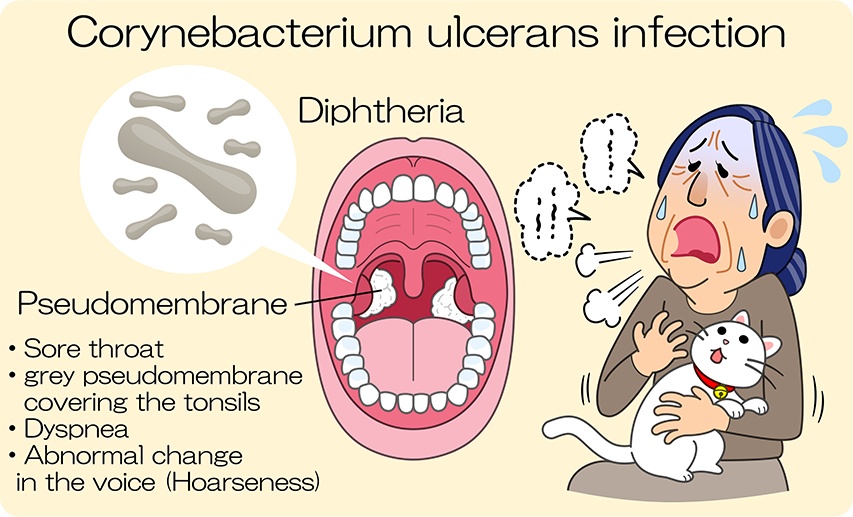Corynebacterium ulcerans, a close relative of Corynebacterium diphtheriae, has become a problem as a causative agent of diphtheria-like diseases in humans. There are many reports of animal involvement as a route of infection, and outside of Japan, contact with livestock animals (cattle, sheep, etc.), ingestion of raw dairy products, and infection from infected pet animals (dogs and cats) have been reported. In Japan, there has been a death in 2018. Diphtheria toxin causes nerve paralysis and white pseudomembranes in the pharynx and other parts of the body. Antitoxins are effective.

Like C. diphtheriae, C. ulcerans produces diphtheria toxin and causes death, requiring early administration of diphtheria antitoxin along with macrolide antimicrobials.